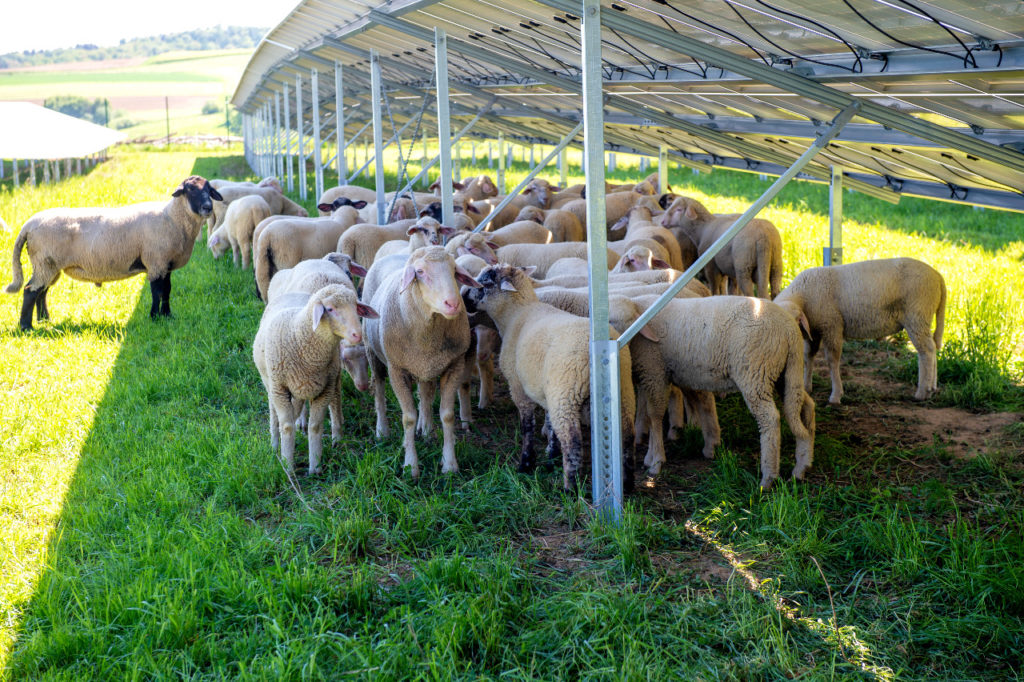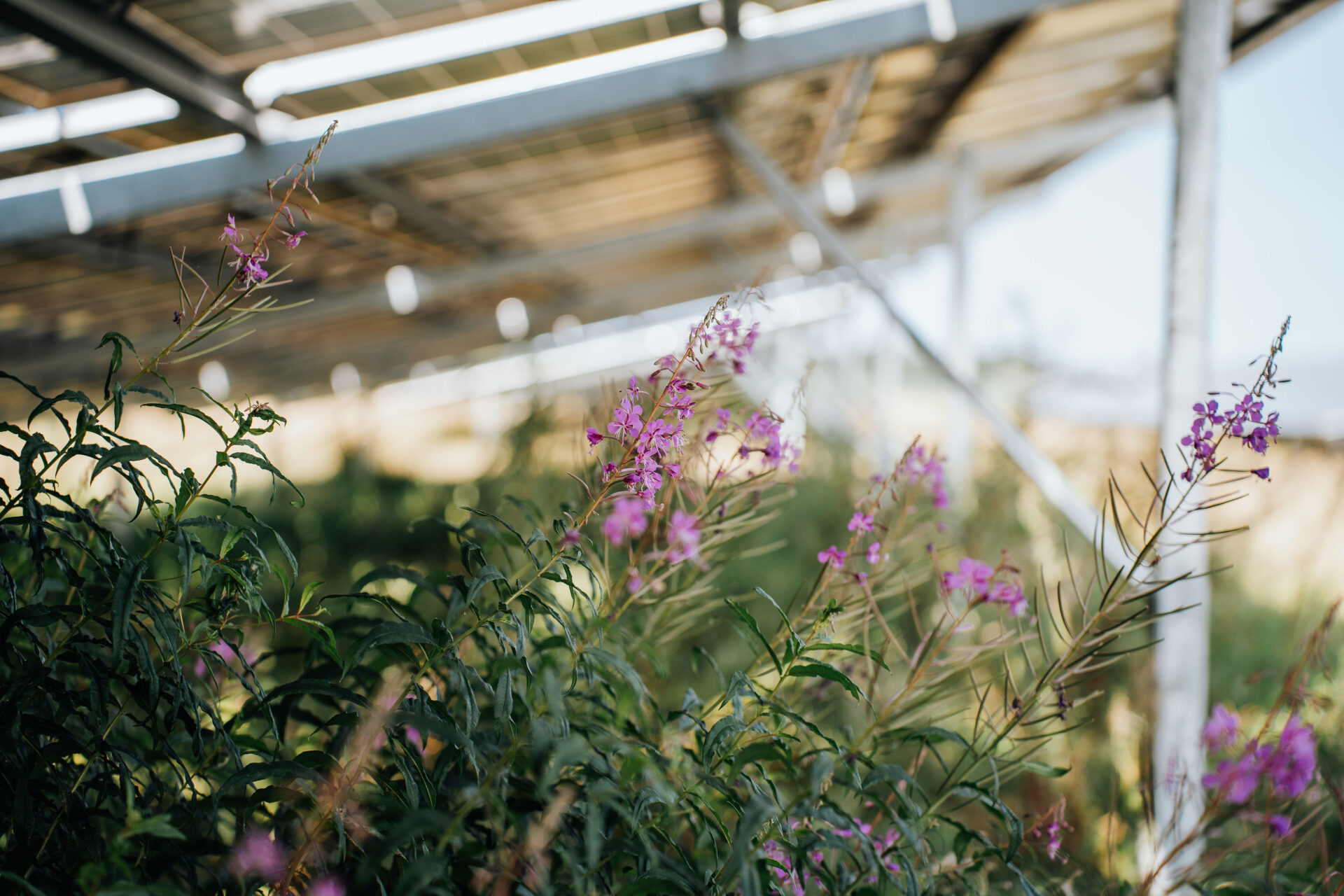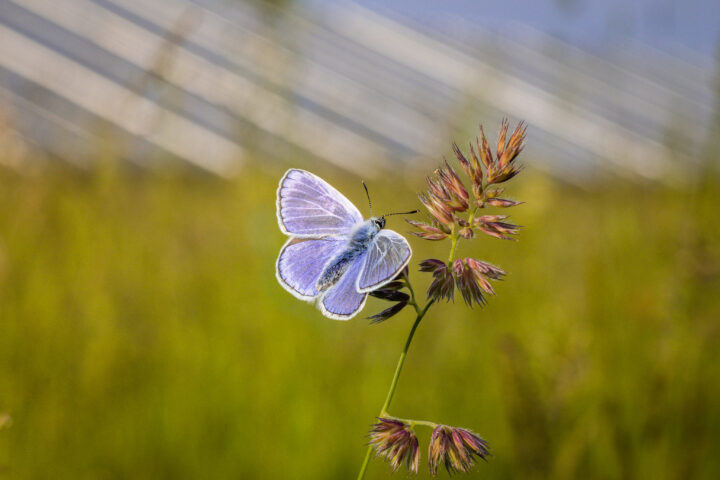Synergies between agriculture and photovoltaics
Solar parks offer plenty of scope for multiple use. They are suitable for grazing sheep, as biotopes to protect biodiversity and can even be combined with food production.
One often hears the prejudice that large areas of land are sealed for the construction of solar parks. Anyone who has ever seen a solar park up close will be convinced otherwise. With ground-mounted systems, the substructure of the modules is driven into the ground, making foundations superfluous. This leaves green meadows that offer plenty of free space that can be used for other purposes.
One form of multiple utilisation of solar park areas is the combination with the Livestock farming. Solar parks are often used for grazing sheep, but pigs or poultry can also be kept outdoors. This is because solar parks are fenced in anyway and the module tables protect the animals from the weather.

Areas that are not grazed are usually mowed twice a year. As neither pesticides nor fertilisers are used, it is possible to Extensively produced hay gain. As the mown material is removed, this creates particularly valuable green spaces for biodiversity. If the climate-friendly Humus build-up mulch mowing, where the mown material remains on the land, is also possible. It can be agreed that the green maintenance is carried out by the owners or lessors of the land, who can thus generate additional income.
On such extensively utilised solar park areas, which were previously intensively farmed, the soil can recover and the Biodiversity on the rise. By dispensing with fertilisers and pesticides, a very large variety of plants can be created, which in turn provides food and habitat for a greater variety of insects and other creatures. Due to the great abundance of insects, birds and bats find plenty of food here and therefore often settle near and sometimes even directly in solar parks. Even kites and cranes are increasingly using solar parks for foraging. In addition to generating energy, ground-mounted solar parks also serve as a biotope for many plant and animal species in open areas, whose habitats are severely restricted by the intensive agricultural use of many areas.






